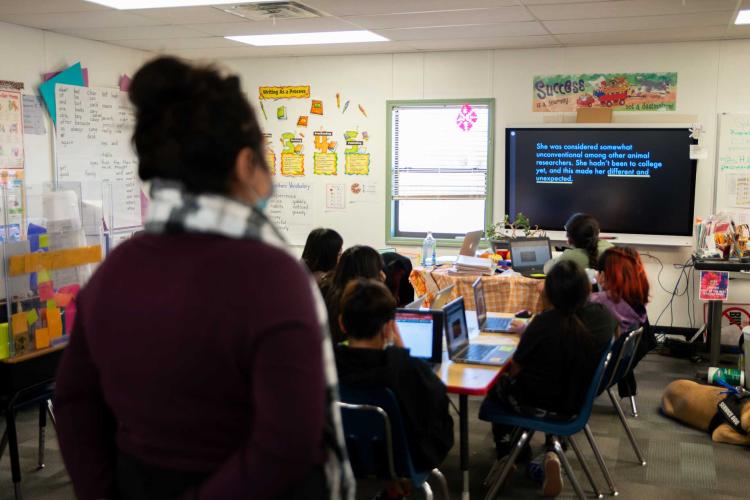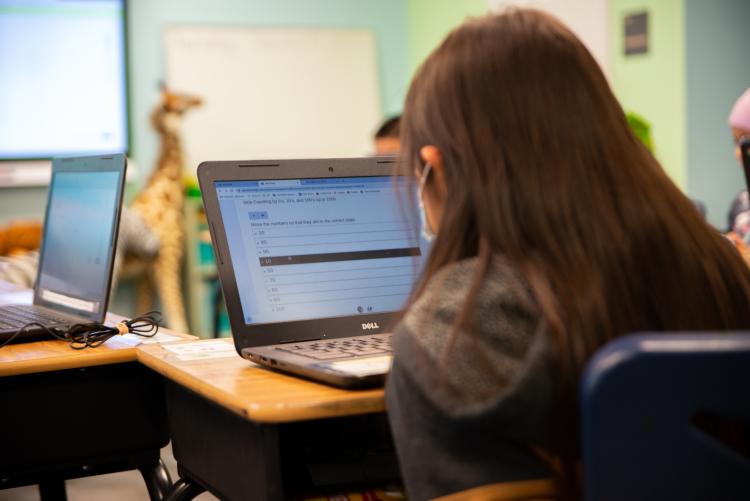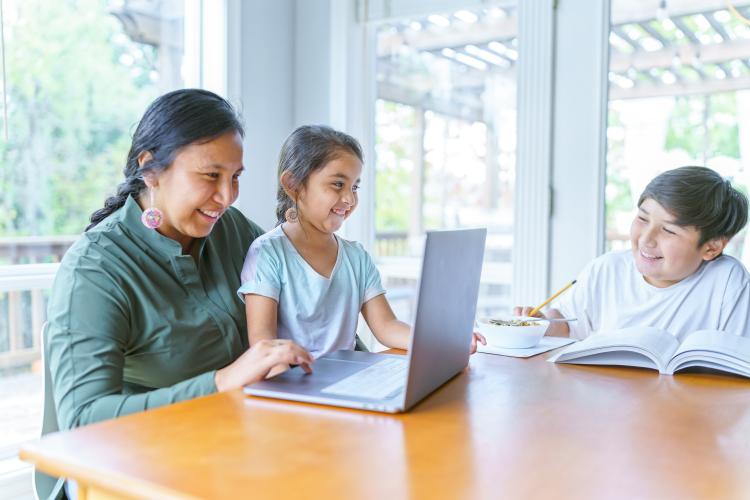Strategic Transformation of Education Plan and the eLMS
The Bureau of Indian Education is in the first year of implementation of its Strategic Transformation of Education Plan. This powerful initiative is purposed to reduce the opportunity gap, increase student opportunities, increase self-advocacy for our students, and empower Tribal leaders for future generations. The STEP is supporting this impactful vision through three strategic objectives:
- Implementation of Blended Learning environments through an education learning management system integrated with optimal culturally responsive, standards-based, differentiated digital curricula.
- Improved digital connectivity for our schools, including increased bandwidth to the door, updated and improved IT infrastructure, and optimal student devices for every student.
- Support and professional development for educators, IT professionals, and leaders through training and Communities of Practice.
The digital gap for our students will not be closed by technical tools or connectivity alone. It is essential to adopt innovative Blended Learning teaching strategies and tools to our everyday classroom experiences, not just on the rare occasion our schools shift to remote learning. Blended Learning strategies and optimal use of the eLMS with the best, integrated curriculum for our schools are at the root of change, and the opportunity for success.
What’s an eLMS?
An eLMS is a digital tool used to improve educational outcomes by empowering students, families, Tribal communities, teachers, staff, and administrators through innovation.
- Creates a hub for learning that allows for high student engagement, standards-based instruction, differentiation for learners, culturally responsive education and the acceleration of student learning.
- Integrates face-to-face classroom practices with digital delivery methods to enhance Blended Learning opportunities.
- Allows for real-time collaboration between leadership and support staff via discussions, videos, book studies, and more inside the platform.
For Educators: Leveraging Technologies to Improve Teaching and Learning
- Enhancing traditional education with emerging Blended Learning techniques, access to digital content, differentiated and culturally responsive learning and more.
- Simplifying collaboration among teachers and instructional staff.
- Providing tools that increase student engagement and acceleration.
- Real-time communication between teachers and students.

For the Students: Preparing Students to Succeed
- Preparing students for self-advocacy and leadership in a work environment or college.
- Allowing students to access classroom materials 24/7 so learning can take place anywhere, anytime.
- Increasing equity of access for students to the best and most advanced resources.
- Allowing students who are in extracurricular activities or absent access to their coursework, so they don’t fall behind.

For Families: Knowing What Students are Learning and Collaborating for Success
- Providing families with a collaborative experience with what students are learning in classrooms.
- Connecting to teachers whenever they have a question rather than having to stop by the school.
Step-by-step tutorial on how to gain access to your digital learning portal.

Remote Learning
- In response to the ever-changing educational landscape, BIE schools are taking proactive measures to ensure a seamless transition to remote learning. With a commitment to providing quality education to Native American students, they are leaving no stone unturned to prepare for any potential challenges that may arise.
- Head to our Remote Learning Page for updates on how the BIE is preparing for any future need to pivot to remote learning and the Pivot to Remote Learning Guide for Schools, Families and Students.
Blended Learning Resources
Blended Learning combines digital learning with traditional, face-to-face instruction. This combined approach facilitates both technical and critical thinking skills. Blended Learning is a combination of online and offline instruction in which students have some form of control over time, place, path, or pace. Therefore, Blended Learning not only focuses on the integration of technology, but also utilizes a student-centered approach. It allows students to have more autonomy, ownership, and control over their learning, by giving them more options and choice on how they want to learn. It also supports educators as they attempt to meet the needs of all students.
Videos
What is Blending Learning?
Message from Director Dearman: Welcome to STEP and the eLMS


